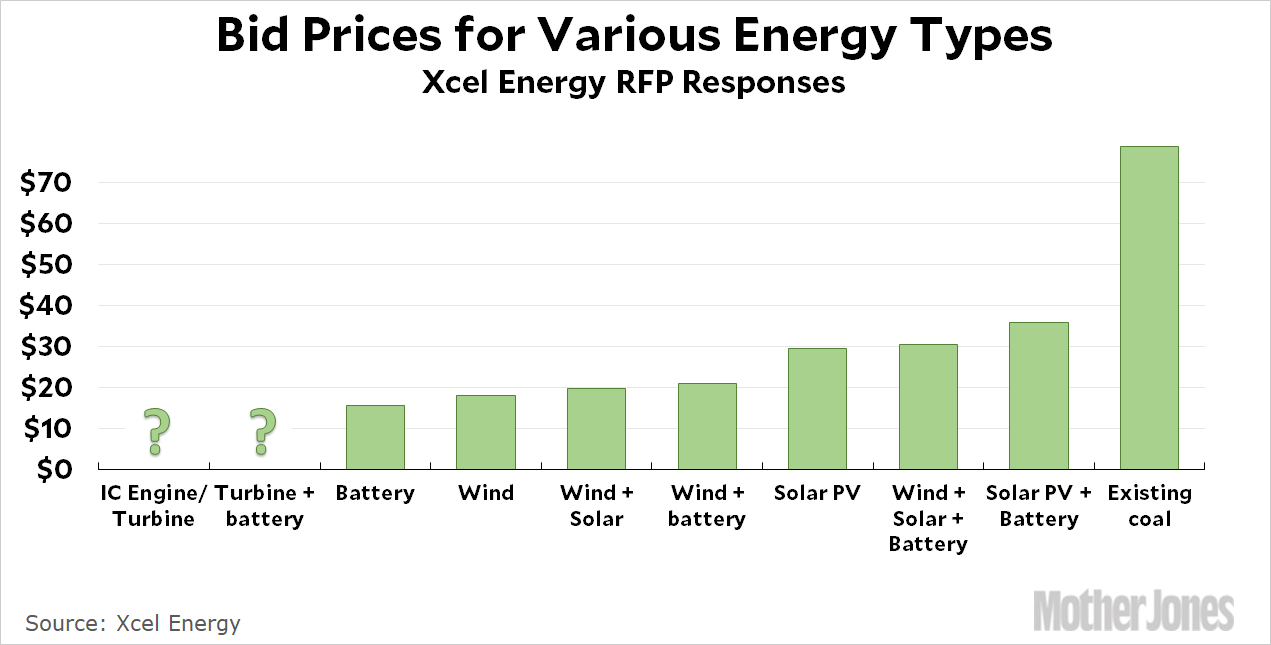I’ve got nothing but charts for you today. Sorry about that. But I might as well get them out of my system. Here’s one that Dave Roberts is excited about. It shows the average bid response to a request for new power plants from Colorado’s biggest electricity supplier:

NOTE: I’ve deleted a couple of paragraphs here. See below for explanation.
Roberts points out that the cost of storage is now surprisingly low. For wind plants it adds about $3/MWh to the cost, and for solar it adds about $6. Since storage is necessary for renewables to become reliable baseload generators that can supply electricity 24/7, this is important.
Roberts also points to the sheer scale here. Xcel received 430 bids compared to 55 for a similar request a few years ago. Of those, 350 were for renewable energy, representing over 100 GW of capacity. There are lots of companies working feverishly in the renewable energy sector.
Read the whole thing. One of the things that Roberts is excited about is that these are actual, concrete bids, and they’re considerably less than anyone was projecting a year ago. In the real world, the price of renewable energy is dropping faster than even the most optimistic projections.
UPDATE: Are you ready for a correction? Here we go.
In the Xcel report, the cost of renewables is given in MWh, while the cost of fossil plants is given in kW-mo. In order to compare apples to apples, I converted kilowatts to megawatts (divide by 1000) and months to hours (multiply by 720). That’s technically correct as a matter of units, but after some conversation on this topic I’ve finally figured out why that doesn’t work.
It has nothing to do with the arithmetic. The difference is that the cost figure for renewable plants tells you how much the bidder will charge to deliver a certain amount of electricity. For fossil plants, it’s the amount the bidder will charge to build a certain amount of capacity. The cost to actually deliver one MWh of power isn’t provided. For that reason, the cost of renewable and fossil plants really can’t be compared until Xcel provides more information.
I’ve removed a couple of paragraphs that said renewables were still more expensive than fossil plants (that’s not clear yet) and I also modified the chart to remove the cost estimates for fossil plants.













